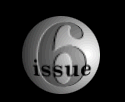


|
|
NOTES
1 Matei Calinescu, Five Faces of Modernity (Durham, NC: Duke University Press, 1987), p. 43. Return to page 1.
2 Jochen Schulte-Sasse, "Modernity And Modernism, Postmodernity And Postmodernism," Cultural Critique, 5 (1987), p. 8. Return to page 1.
3 Publisher's Note: The European theatrical version of Brazil does not open with the clouds shot. For an in-depth discussion of the various versions of Brazil, we suggest you check out "How Many
Versions of Brazil have been released?" on the Terry Gilliam's Brazil Web site. Return to page 2.
4 Fred Glass, "Brazil," Film Quarterly, 39 (1986), p. 23. Return to page 2.
5 Calinescu, p. 7. Return to page 2.
6 According to Calinescu, "The phenomenon of compulsive consumption, the fear of boredom, and the need for escape, combined with the widespread view of art as both play and display, are among the factors that in various degrees and fashions have contributed to the growth of what is called kitsch. What justifies the inclusion of kitsch among the central concepts of modernity…is the fact that in kitsch the two bitterly conflicting modernities are confronted, as it were, with their own caricature. The great paradox of kitsch…is that being produced by an extremely time-conscious civilization, which is nevertheless patently unable to attach any broader values to time, it appears as designed both to ‘save’ and to ‘kill’ time." Ibid, pp. 7-8. Calinescu also has an entire chapter dedicated to "Kitsch." Return to page 2.
7 Ibid, pp. 224-225. Return to page 3.
8 Ibid, p. 267. Return to page 3.
9 Barry Smart, "Modernity, Postmodernity, And The Present," in Bryan Turner, ed. Theories of Modernity And Postmodernity (London: Sage Publications, 1990), p. 21. Return to page 3.
10 Barry Smart, Modern Conditions, Postmodern Controversies (London: Routledge, 1992), p. 149. Return to page 3.
11 Jack Mathews, The Battle of Brazil (New York: Crown Publishers, 1987), p. 31. Return to page 3.
12 Smart in Turner, ed., pp. 22-23. Return to page 3.
13 Glass, p. 23. Return to page 3.
14 Smart in Turner, ed., p. 21. Return to page 3.
15 Calinescu, p. 267. Return to page 3.
16 Mike Featherstone, "The Fate of Modernity: An Introduction," Theory, Culture And Society, 2:3 (1985), p. 1. Return to page 4.
17 Max Weber, Economy and Society (New York: Bedminster, 1968), p. 1116. Return to page 4.
18 Ralph Schoeder, Max Weber and the Sociology of Culture (London: Sage Publications, 1992), p. 113. Return to page 4.
19 According to Andrew Markowitz, one of Gilliam’s hallmarks is to create worlds that mesh the external logic of the sets ("the dystopian bureaucratic nightmare of Brazil, for example") and the internal logic of the characters. Andrew Markowitz, "The Making Of 12 Monkeys," Cinefantastique, 27 (1996), p. 18. Return to page 4.
20 Schroeder, p. 126. Return to page 4.
|
